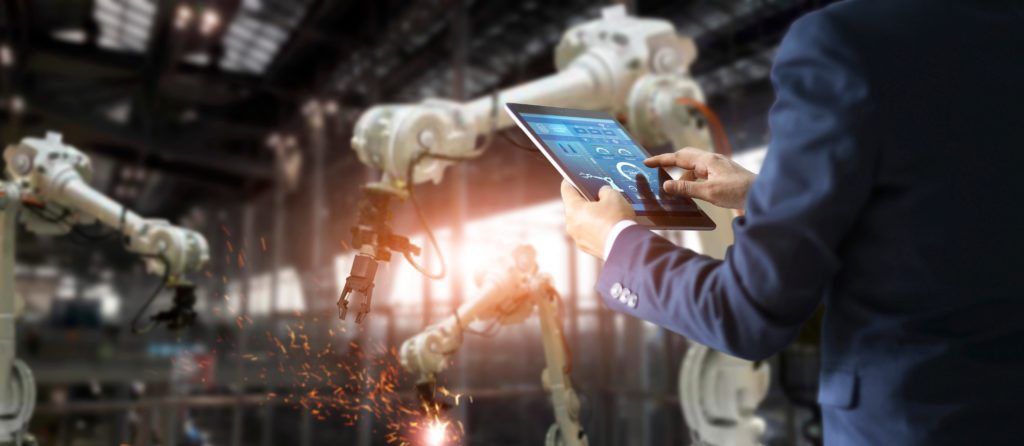Features -
What’s the Potential for AI in construction

Ibrahim Imam is the co-founder of PlanRadar, Europe’s leading ConTech SaaS solution for digital documentation & communication in construction and real estate projects. In this feature he writes about AI and the construction industry.
A drone comes into view and hovers over your construction site. Moments later, the tablet you are holding lights up with several observations the drone has made; a construction worker in section B is not wearing his helmet, four of your diggers are underutilised and a dark patch of earth in section D suggests that the area is becoming waterlogged.
This kind of useful information is the future promise of Artificial Intelligence (AI) in construction. Observations like these could improve construction execution planning, increase the productivity within construction execution itself and enhance overall workplace safety.
While the technology is still relatively new and not yet widely utilised, its market demand is expected to grow. Indeed, one forecast reckons that the building AI market will reach UDS $4.5 billion by 2026.
What is AI in construction?
AI is an aggregative term used to describe how machines can be trained to imitate human cognitive functions, including spotting patterns, learning from experience and understanding images. Machine learning is a subset of AI that uses statistical techniques to enable computer systems to ‘learn’ from the data collected. As a machine is exposed to more data, it becomes more efficient at understanding and providing useful insights.
AI in construction involves using these technologies to make building sites safer, reduce waste and boost efficiency. For example, AI programmes have the ability to monitor the real-time interactions of construction workers and machinery on the site and can alert site managers to potential safety issues, construction errors and productivity lags, so they can be resolved quickly and efficiently.
Moreover, if you have conducted thousands of site audit reports, a building AI solution could crunch through all the data to make a series of recommendations and help improve future projections.
What are the potential uses for AI in construction?
Generative design: One of AI’s greatest strengths is its ability to explore different variations of a model to find the best option. Generative design could be useful for designers using BIM technology. For example, AI would take a BIM model and explore tens of thousands of minor and major design changes to make a design safer and more stable, or simply cheaper and faster to build. Whilst it would require months of work for a human to manually explore all these possibilities, an AI engineering programme could so in a matter of hours.
Generative design has already been used in manufacturing and companies like Alice Technologies are now trying to bring it to the construction industry too.
Automated fault detection: AI programs can compare the progress of a physical building against a digital replica of the building that is represented in a BIM model to detect any errors or deviations from the original building plan. This analysis enables all parities across the delivery chain to react to any potential issues at an early stage and significantly reduces the occurrence of ‘knock-on’ issues at a late date.
AI is also very effective at analysing historical data and can use these insights to create likely forecasts of future events. Whilst the construction industry is still waiting for a programme that can do this, the data that apps like PlanRadar collect could feasibly be used to train a machine to spot patterns in defects and their common locations. Picture an AI system that can assess hundreds of thousands of damage reports for different types of buildings over time, eventually it could plausibly begin to predict when certain surfaces, fittings or materials will become damaged and alert maintenance teams to this before it becomes an issue on the ground.
Project management: Even with skilled project managers in charge, 34 percent of construction projects run over budget in the UK and 41 percent of projects are delayed. However, academic research into AI forecasting algorithms has proven highly accurate in estimating cost overruns of projects.
Project managers could use AI-enhanced PPM software that identifies how likely their plans are to be delayed. For example, AI based tools could highlight possible delays and changes in the construction process by comparing the physical building progress to a digital replica of the building that is represented in a BIM model. All parts of the supply chain, from distributors and manufacturers to project managers and sub-contractors, could then be automatically informed and revise their projections in line with the updated schedule to manage time and resources more effectively.
Robotics: AI construction robotics represent an exciting possibility for saving time and reducing risk on construction sites. Whilst we are still a long way from a world of autonomous robot bricklayers, firms like Built Robotics are already providing bulldozers and excavators which can be given defined tasks and work alone.
This kind of technology could enable projects to progress at a much faster pace. These innovations will be especially beneficial for projects in remote locations that are difficult to get workers to and from each day – instead, remote diggers could work 24/7 clearing sites and get the work done much faster.
AI-enhanced drones: Drones are already being used on construction sites to give builders new perspectives on projects. Moreover, the images and measurements collected by drones via remote recordings and 360 degree scans can provide the data to enable AI programmes to track the progress of a project against the original digital plans.
Now, firms like Skycatch are going one step further and training drones to ‘understand’ what they are seeing. The applications here are enormous, from spotting dangerous activity to monitoring productivity levels, intelligent drones could help make sites safer, more efficient and productive.
Obstacles to adoption
Unfortunately, despite its vast potential across a variety of applications, AI construction technologies still face a handful of key obstacles to wider adoption.
AI machines require large amounts of data to ‘train’ algorithms to spot patterns. For example, an AI system that is trained to see if labourers are wearing helmets would need to view millions of photos of individuals of different heights and at different distances to know when to raise the alarm. However, most construction companies are too small to hold enough data for this and so they are limited in their capabilities. Moreover, there is a shortage of data scientists and they tend to command extremely high salaries, so for a while only the biggest firms will be able to attract AI talent.
At present, AI in construction remains a relatively new technology, however, that shouldn’t stop us from thinking about what one day might be possible. Despite the obstacles to adoption, even smaller companies can prepare to benefit from future developments in AI by ensuring that their project data is consistently captured and safely stored. If the construction industry is to continue to thrive in the digital age, it must be open to adopting the capabilities of AI technologies.
If you would like to read more like this, then please click here






